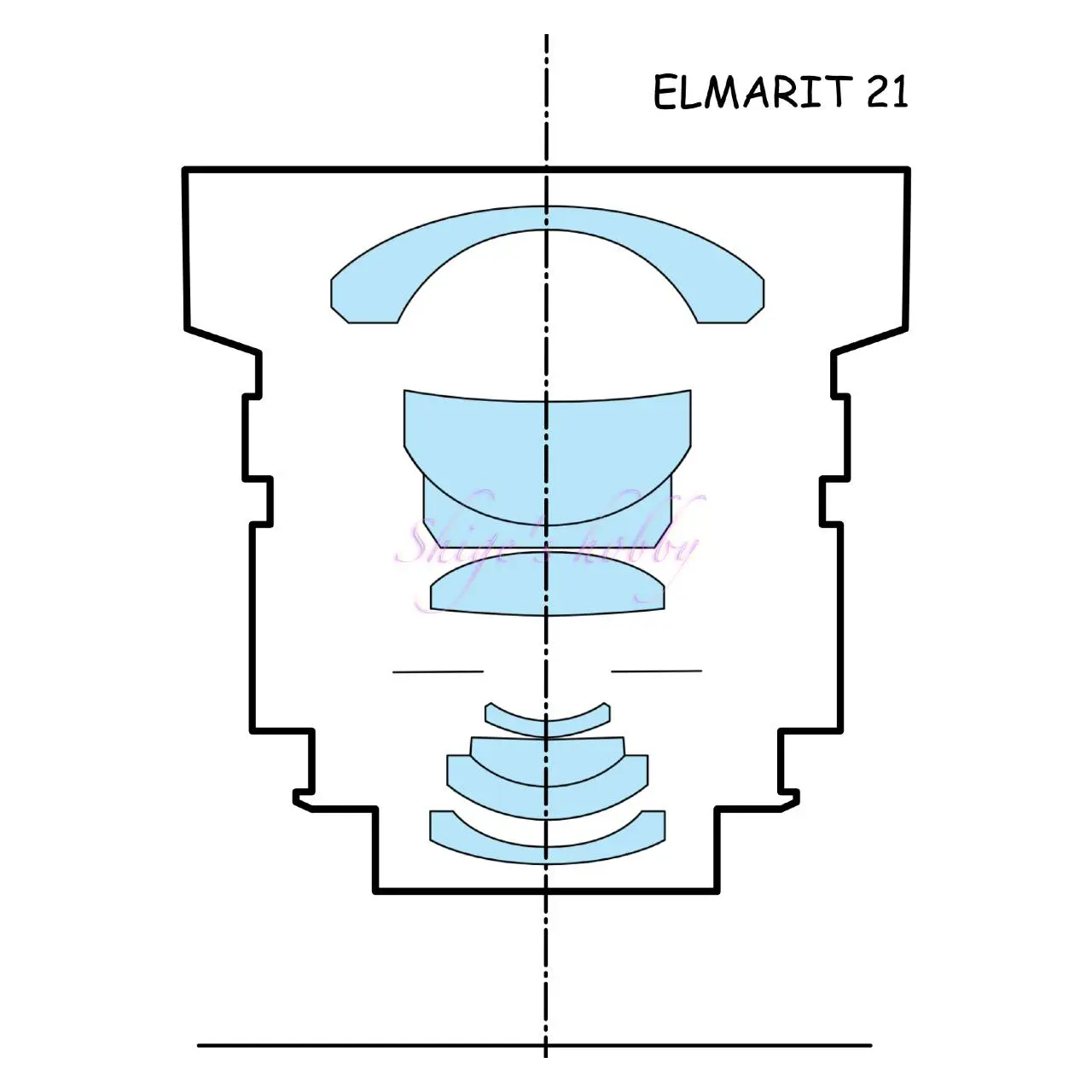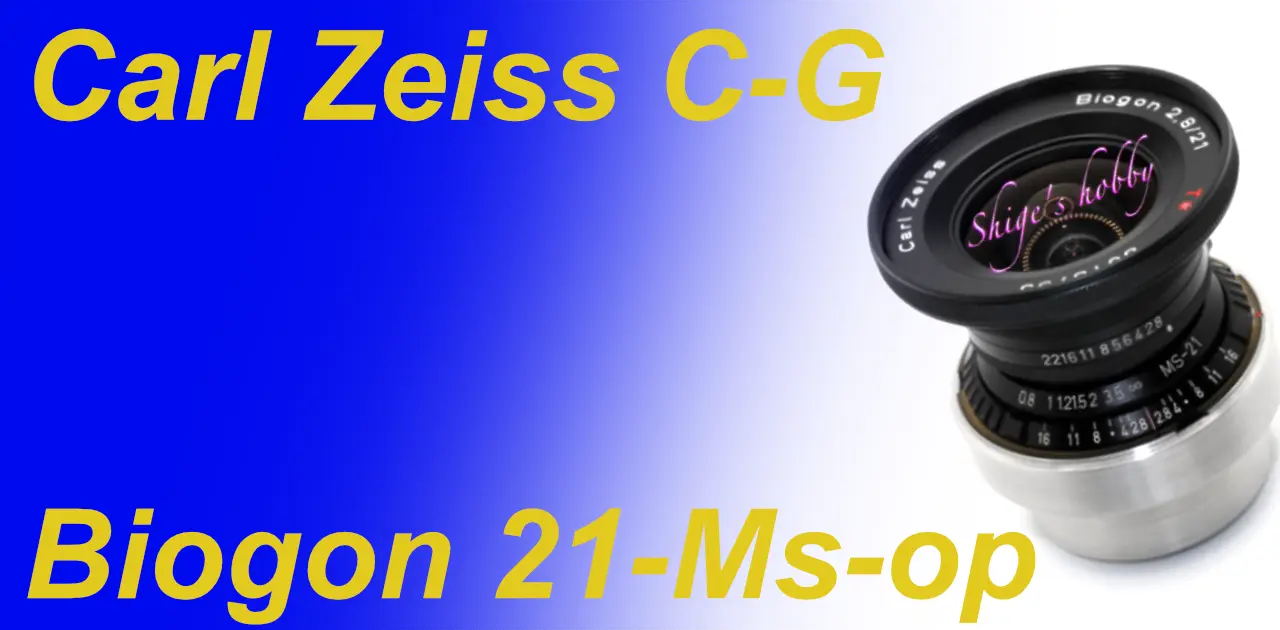Last updated on 2025-11-11
A review and sample photos of a CONTAX G BIOGON T* 21mm F2.8 lens that was modified by Ms-optics to a Leica M-mount, used with a digital rangefinder camera.
- Please see the disclaimer regarding advertising here.
- Italicized links in the text are advertisement links that take you to other sites.
Table of contents
Gallery
The sample photos were taken using the following cameras:
- LEICA M typ240
- LEICA M8
- EPSON R-D1
Review
1.Overview
The BIOGON G 21mm F2.8 is an autofocus lens released by Kyocera in 1996 along with the Contax G2 camera.
This article introduces a version of the BIOGON G 21mm F2.8 lens that has been modified by MS-Optics (Miyazaki Optics) to a Leica M-mount (rangefinder coupled).
There are several types of lenses called BIOGON 21mm, and this lens is different from the Contarex BIOGON 21mm and the Cosina-Zeiss ZM BIOGON 21mm.
This lens was originally used with the Contax G1 and Contax G2 cameras. After selling those cameras, I had MS-Optics (Miyazaki Optics) modify the lens to a Leica M-mount with rangefinder coupling. The modified lens uses a common helicoid for 21mm lenses called MS-21.
The main differences between the original lens and the MS-Optics modified lens are the following four points.
- Hood and Filter Mount Fixing Method
- The original lens has a fixed filter mount, so the filter doesn’t rotate during focusing, allowing the use of a rectangular hood and making PL filters easy to use. However, third-party rectangular hoods and PL filters are not compatible.
- The modified lens has a rotating lens barrel with the filter attached during focusing, making it difficult to use rectangular hoods and PL filters.
- Aperture Click Stops
- The original lens has click stops for each aperture setting.
- The modified lens has stepless aperture control from F2.8 to F16.
- Rangefinder Coupling
- The original lens is a G-mount lens, so it has autofocus (AF).
- The modified lens is coupled to the rangefinder of Leica M-type cameras.
- Minimum Focusing Distance
- The original lens has a minimum focusing distance of 0.5m.
- The modified lens has a minimum focusing distance of 0.7m.
2.Usability
The advantage of modifying the BIOGON G 21mm F2.8 lens to an M-mount is that it allows focusing using the double image coincidence method on Leica M rangefinder cameras. Furthermore, for less common mirrorless cameras, while CONTAX G mount adapters may not be available, Leica M mount adapters are often provided, increasing the lens’s versatility.
While this lens presents few problems when used with film cameras, some digital cameras may experience issues with vignetting and color cast.
Due to its excellent coating, this lens has superior resistance to backlighting, and even in situations where sunlight enters the frame, you will rarely encounter strange light effects caused by flare or ghosting.
The lens construction, as shown in the specifications below, is symmetrical, and the rear element’s protrusion is minimized.
However, compared to retrofocus type wide-angle lenses or wide-angle lenses for SLR cameras, the rear element is closer to the sensor surface, which can cause a purple color cast in the peripheral areas of the image on some digital cameras. This is particularly noticeable when photographing blue skies, and a color cast can be seen in the first example image taken with a Leica M typ240.
Five possible solutions to address the color cast are considered below.
- Enjoy the shooting results in monochrome.
- If shooting in color, drastically reduce the detail in the surrounding areas.
- Choose subjects with colors that don’t make the cast stand out (give up on blue skies).
- Shoot with film.
- Choose a camera with minimal color cast.
This color cast issue, which occurs even with the same 21mm focal length, doesn’t happen with retrofocus type lenses like the Elmarit 21mm F2.8, where the rear element is further from the sensor plane. Therefore, similar to the Super Angulon, this lens is somewhat difficult to use with cameras like the Leica M9, M, and M10.
While the actual focal length is 21mm, cameras with smaller sensors than 35mm film, such as the APS-C size sensor in the EPSON R-D1, have a conversion factor of 1.5x, resulting in an equivalent of 32mm. The LEICA M8, with its APS-H size sensor, has a conversion factor of 1.33x, resulting in an equivalent of 28mm. When shooting with these cameras, the problematic peripheral areas are cropped out, eliminating the image issues.
When using the LEICA M8, since there is no 21mm frame in the built-in viewfinder, an external viewfinder is necessary for composition. Using a 28mm external viewfinder provides a reasonable shooting range.
Even with cameras equipped with APS-C size sensors, color cast (color fringing) in the peripheral areas can occur depending on the sensor. Among the cameras used, the SONY α NEX-7 and LEICA T typ701 sometimes show a cyan cast when photographing the sky.
While several manufacturers offer modified versions of the BIOGON G 28mm, PLANAR G 35mm, and PLANAR G 45mm lenses, I haven’t seen any M-mount modifications of the BIOGON G 21mm F2.8 other than those by Ms-optics.
The genuine 21mm viewfinder included with the lens isn’t particularly good; the latest Cosina-Zeiss or Leica 21mm viewfinders would provide a clearer view.
■Medium Format Sensor Mirrorless Camera
The HASSELBLAD X2D-100C is a mirrorless camera equipped with a medium format digital sensor. The sensor size is larger than 35mm film format, and the focal length conversion factor compared to 35mm film format is 0.8x. If the image circle covers the medium format digital sensor, it would be equivalent to a 17mm ultra-wide-angle lens. However, unfortunately, the image circle of the BIOGON G 21mm F2.8 is limited to the 35mm film size and does not cover the entire range of the medium format digital sensor.
The image on the right below shows the shooting range of the medium format digital sensor at its outermost edge; the edges of the image are blacked out due to insufficient image circle coverage. The area inside the red line represents the 35mm film size (36 x 24mm).
This image shows that there is no color cast in the peripheral areas. While the LEICA M-P typ240 sometimes exhibits a cyan color cast in the peripheral areas depending on the scene, making the image unusable unless converted to monochrome, the HASSELBLAD X2D-100C sensor does not produce a color cast even when using this lens. This means that this lens is easier to use in color with the X2D-100C than with some 35mm full-frame sensor cameras.
The X2D-100C has a function to crop to 35mm film format, which makes it as easy to use as a 35mm full-frame sensor camera. However, since the X2D-100C does not have a shutter mechanism in the camera body, it uses an electronic shutter, so you need to be careful about rolling shutter distortion of the subject.
Among mirrorless cameras equipped with a medium format digital sensor of the same size, Fujifilm’s GFX series has a mechanical shutter built into the body, making Leica M-mount lenses easier to use.

3.Summary
In conclusion, summarizing the modified CONTAX G BIOGON G 21mm F2.8 lens converted to M-mount: Ms-Optics modified the original G-mount lens to M-mount, allowing it to be coupled with the rangefinder of a rangefinder camera, enabling accurate focusing.
However, digital rangefinder cameras lack a 21mm viewfinder frame for composition, requiring the use of an external viewfinder.
Mirrorless cameras eliminate these inconveniences, but the rangefinder coupling mechanism becomes meaningless. The only advantage of converting to M-mount for mirrorless cameras is the reliable availability of mount adapters for various camera models.
Specifications, considerations, etc.
Compared to Leica’s 21mm lens, the BIOGON 21mm has its rear element closer to the film plane. This difference is the cause of color cast (color fringing) in the peripheral areas of images taken with digital cameras.
The BIOGON 21mm, released in 1996, offers better resolution and distortion correction compared to the ELMARIT M 21mm, which was released in 1979 and uses spherical lenses. However, it is inferior in resolution and only comparable in correction to the ELMARIT M 21mm ASPH., which was released in 1997 and uses aspherical lenses.


| Item | BIOGON M mod | ELMARIT M 21mm | ELMARIT M 21mm ASPH. |
| focal length(mm) | 21 | 21 | 21 |
| Maximum aperture | 2.8 | 2.8 | 2.8 |
| Minimum aperture | 22 | 22 | 16 |
| Leaf blade | 7 | 8 | 8 |
| Lens configuration | 9 elements in 7 groups | 8 elements in 6 groups | 9 elements in 7 groups |
| Minimum distance(m) | 0.7 | 0.7 (first ver 0.4) | 0.7 |
| Lens length(mm) | 35.5 | 46.5 | 46 |
| Lens max diameter(mm) | 59 | 62 | 58 |
| Filter type | 55 | E60 | E55 |
| Weight(g) | 151 | 290 | 415(Silver) 300(Black) |
| Hood | Cylinder Screw in | 12543(old=pin) 12537(New=hook) | 12592 14041 |
| Lens mount | LEICA M | LEICA M | LEICA M |
| Release date | 1996(Original G Version) | 1979 | 1997 |
| Price | Ms-optics | – | – |
| Production numbers | ? | 13,930 | 7,250 |
Reference links
- Zeiss BIOGON description page by Wikipedia
- Zeiss Photography Historical Products(CONTAX G lens data sheet is available in the middle of the linked page)
- CONTAX G1・Shige’s hobby contents
- CONTAX G BIOGON 21mm・Shige’s hobby contents
- LEICA ELMARIT M 21mm・Shige’s hobby contents
- LEICA ELMARIT M 21mm ASPH.・Shige’s hobby contents
Affiliate links
- CONTAX lens・Ads by Amazon
- Ms-optics・Ads by Amazon
- CONTAX books・Ads by Amazon
Update History
- 2025.11.6
- 2025.5.13
- 2024.8.1
- 2024.01.21:Modify the article
- 2022.03.07:first article



Be First to Comment